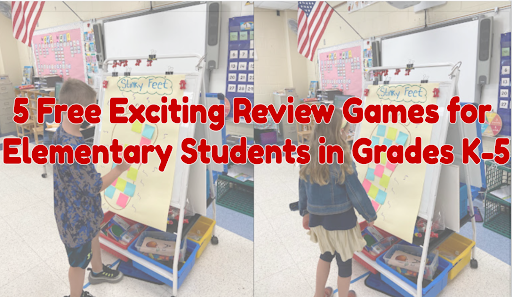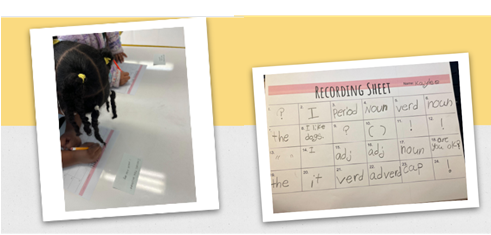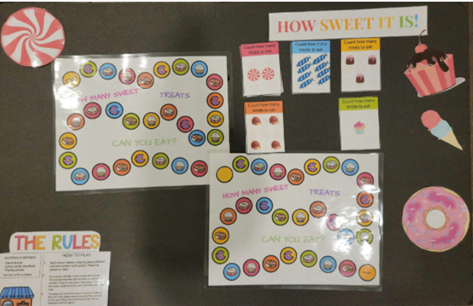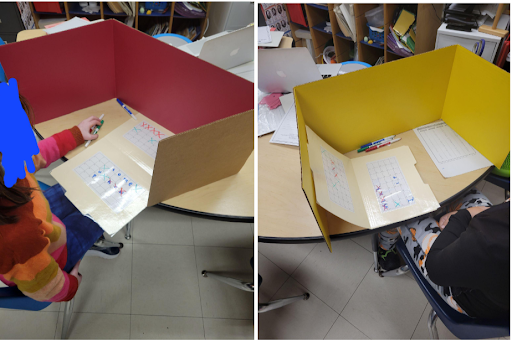5 Free Exciting Review Games For Elementary Students in Grades K-5

After Kindergarten it seems like playtime ends in schools. Worksheets and lectures become synonymous with learning, and going to school is no longer fun for many kids. For teachers, it's important to find ways to extend the excitement of learning beyond Kindergarten. Sure, some students do well with teacher-centered instructional methods and are able to ace tests and quizzes from listening to lectures and taking notes. But for a large number of students, these instructional methods result in forgetting. Lessons go in one ear and out the other if the content isn’t reinforced or used within a week, according to the Forgetting Curve. When these students take cumulative assessments, it appears they've retained hardly anything that's been taught. Why?
For students to excel on assessments weeks or months removed from the lesson, it's important that teachers shift from short-term memory tactics and find ways to make what they teach stick. To stimulate long-term memory, engage students with fun and challenging learning experiences. Make learning fun by reintroducing play in the classroom and incorporating games that reinforce content from lessons. This will help strengthen students' retention skills and increase their chances at excelling.
How do we know this? Research proves it! Gameplay has a positive function in learning, thanks to the ability of games to motivate and engage, with “winning” - or, retrieving the most retained information - the reward.
Fortunately for students of our new teachers, this important teaching detail has not been lost on those facilitating their learning. It appears our Rutgers Alternate Route teachers are on the right track and ensuring that every student’s experience in school is fun and interactive.
Below is a collection of unique games our teachers pieced together - with the challenge that they part ways with overused review formats like Jeopardy and Kahoot. Each game is customized for different subjects and grades but can be adapted for any content. Not to mention, most of them require no technology. These free, accessible games use exciting, fresh methods to encourage information recall.
Read on below to browse each teacher-designed game and access instructions.
Play on!
Grammar Game Scoot

Elementary school teacher Caitlyn Bermudez helps her students master English grammar rules with the Grammar Game Scoot she created.
Here’s How to Play:
With a partner, have students walk around to each desk. Find an index card with the grammar sentence or word. They will then have 25 seconds to identify either a grammar mistake is or what kind of word is listed on the card. Students must work with their assigned partner only. In the end, students will be able to identify punctuation marks, grammar mistakes and be able to correct them.
How Sweet is it?

Letecia Devaughn teaches special education and math. To help her students learn to count, she designed the game “How Sweet is it?"
Here’s How to Play:
This fun game needs different-colored playing pieces, which are placed on the start. Each player takes their turn to spin the spinner. The number that they land on is the number of spaces they move on the board - with the color they land on representing the color card to take. The player counts the amount of sweet treats on the card. If the player counts correctly, they stay on their spot; however, if incorrect, they must move back two spaces. The first person to the finish line is the winner. Your students should walk away counting experts after playing this game.
Interactive Math Game

To reinforce the math skills she teaches, elementary school teacher Mary Ann Gallaway created an interactive math game show, which students play on her classroom SmartBoard.
Here’s How to Play:
Divide students into two teams. Develop questions and assign a value to each. Use a numbered spinner that students spin before seeing the question. The spinner determines how many points the question they must answer is worth. Each round, different students take turns being the team representative. Once the question is read, the team gets 15 seconds to discuss the answer together after which the representative must give the answer. If the team does not get the answer correct, the other team has a chance to steal the question and earn points with the correct response. Teams also have a chance to earn bonus points. This game helps teach students how to work together as a team and to use the collective team knowledge answer the question
Bingo

When Heidi Leigh noticed that her third-graders were struggling to understand rows versus columns in math, she adapted the classic Bingo game to help them grasp the concept.
Here’s How to Play:
First, create Bingo boards and populate them with the possible multiplication sentences. Make sure they different arrays are displayed, including a free space in the middle. Next, project those arrays on the SmartBoard. The students will find the multiplication sentence that corresponds with the array on their Bingo boards and put a chip on it. Like with traditional bingo, to win, students must fill a row either horizontally, vertically or diagonally. When they fill a row, they must say aloud “Bingo!”
This game reinforces how to interpret arrays and how to correctly write multiplication problems while keeping students excited about getting it right.
Sight Word Battleship

Make reading and spelling sight words fun for developing readers with the game Sight Word Battleship. The game was contributed by Jaclyn Rivas, who is dual certified elementary and special education teacher .
Here’s How to Play:
Create a list of sight words and a game sheet of empty squares. Partner students to play against each other. Have each student select a sight word they will use for the first round, then write the one letter of the word in various squares on the game sheet. Partners should take turns trying to sink each other’s battleship by guessing the letters in their squares.
The first player starts by calling out letters they think might be in their partner's selected word. The other player confirms whether or not their selected word includes the called letter by saying yes or no. If the first player guesses successfully and calls out a letter on the other person’s board, they should make a mark to indicate they've correctly guessed. Their partner then gets a chance to guess by calling out a letter. The first person to correctly guess all letters in their partner's selected word wins the round.
If your partner guesses the selected word and sinks the ship of their partner, the other student must read the word to them. Then, the partner must define the sight word. Afterwards, students should work together to use the words in sentences. Lastly, students write out their sentences and continue with the game.
If you’re considering following your dream of teaching, Rutgers Alternate Route can offer you the support and training you need to succeed. Be sure to follow Rutgers Alternate Route on Twitter and sign up for Alternate Route’s monthly newsletter for more information and stories from the field of education.

 Heather Ngoma has over 25 years of experience collaborating with educators across New Jersey to drive education innovation. She currently serves as the Director of the Rutgers-GSE Alternate Route Program in the Department of Learning and Teaching, a program which helps career changers, recent college graduates, and other aspiring education professionals become licensed teachers in New Jersey. Follow her on Twitter @heatherngoma.
Heather Ngoma has over 25 years of experience collaborating with educators across New Jersey to drive education innovation. She currently serves as the Director of the Rutgers-GSE Alternate Route Program in the Department of Learning and Teaching, a program which helps career changers, recent college graduates, and other aspiring education professionals become licensed teachers in New Jersey. Follow her on Twitter @heatherngoma.





